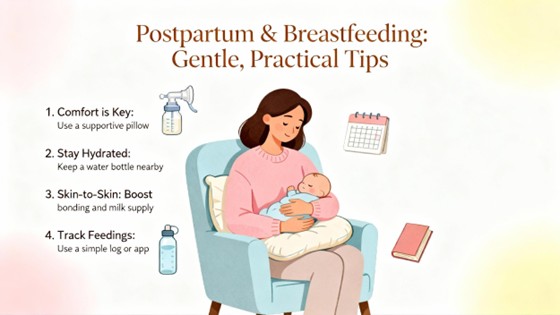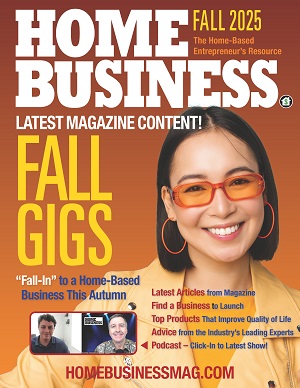Travel with a baby can feel like packing a nursery into a carry-on. As a mom who believes in gentle, responsive care, I’ve learned that one thoughtful tool changes everything on the move: a well-chosen baby carrier for traveling. Carriers free your hands, support breastfeeding and contact naps, simplify airport lines and subway stairs, and make sightseeing feel doable again—without compromising your baby’s comfort. When you match the carrier to your child’s stage, your climate, and your itinerary, travel days become calmer, safer, and more connected.
Why Baby Carriers Change the Way You Travel
The greatest gift of a carrier on the road is presence. Hands stay free for boarding passes, snacks, and big-kid hands, while baby rests close enough to hear your heartbeat. City trips become smoother because museums, trains, and cobblestones don’t depend on elevator availability. Long-haul days benefit from wearable naps and responsive soothing without detours back to the hotel. Reviewers focused on urban travel consistently note these advantages, with city travel guides highlighting easier airport movement, public transport access, and better naps on the go when parents babywear rather than rely solely on a stroller. Independent testers also report that the right baby carrier for traveling spreads weight to the hips and lumbar area, which matters on long travel days when your shoulders are already carrying so much.
Another quiet benefit is emotional. In the postpartum months, keeping your baby close with a soft wrap or gentle buckle carrier supports bonding and breastfeeding rhythm while still letting you reenter everyday life at your own pace. For heat waves or tropical trips, mesh and other breathable designs reduce the “human sauna” effect so common in dense fabrics; experienced travel testers have praised ventilated soft-structured carriers for staying wearable even in direct sun.
What Counts as “Travel-Friendly” in a Carrier
A travel-friendly carrier balances secure support with packability and climate awareness. The major categories work differently when you’re on the move, and matching them to your plans is where the magic happens.
Wraps
A wrap is a long piece of fabric you tie around your torso, creating a snug, womb-like hold that many newborns adore. Stretchy options are light and compact, often fitting newborns well and accommodating up to about 35 lb depending on the brand, while woven wraps can feel warmer and more supportive as babies grow. Seasoned hot-weather testers have leaned on extra-breathable wraps in the first weeks, especially when the goal is skin-to-skin bonding without overheating. The trade-off is a learning curve and less convenience for quick on–off moments at security.
Ring Slings
A ring sling is a length of fabric threaded through two rings for quick, micro-adjustable carries on one shoulder. It shines for short stints, breastfeeding on the move, and tight urban spaces. It is fast to don in a museum line or at the gate, and its compact form is luggage-friendly. Shoulder loading can be fatiguing over time, so this style is best as your quick-change layer rather than your only carrier for a full-day itinerary.
Soft-Structured Carriers (SSC)
An SSC (often called a buckle carrier) uses padded straps and a structured waistband to support babies from newborn through toddlerhood within each model’s weight and fit range. Many leading SSCs rate to about 45 lb, offer multiple positions (front-facing in, front-facing out, hip, and back), and include lumbar support for parents. Some models use mesh panels and breathable weaves to manage heat and sweat, and several designs add pockets or UPF hoods that are genuinely useful on long sightseeing days. Independent testing labs that have purchased and evaluated dozens of carriers since 2012 frequently highlight SSCs as the most versatile travel workhorse thanks to their fast on–off, ergonomic support, and multi-year lifespan.
Hip Seats
A hip seat is a waist-worn perch you rest your child on, designed for the toddler stage of constant up–down requests. It spares your arms and allows quick transitions. However, it is not a fully hands-free solution; your supporting hand still does part of the job. For airport days with multiple bags, that matters. Travel reviewers who love their hip seats emphasize their place as a carry assist, not a replacement for a hands-free baby carrier for traveling.
Structured Backpack Hiking Carriers
Framed hiking carriers shift weight efficiently to your hips and are built for long outdoor days. Popular models typically fit babies starting around 6 months and carry up to about 48 lb, with framed designs offering adjustable suspension, supportive hip belts, and integrated sunshades. They are superb on trails and in national parks and bulky on crowded city streets or planes. Experienced hiking parents and outdoor reviewers regularly advise trying these on in-store, getting fitted, and—if possible—buying used for excellent value.
Real-World Lessons From Trusted Reviewers
Travel days reward designs that are light, breathable, and easy to pack. One standout is a compact buckle carrier that folds into its own belt bag and can be worn as a waist pack until you need it. A verified Baby Tula US customer praised how this lightweight baby carrier for traveling disappears into a backpack and avoids the sweat and bulk of larger frames at home or on walks. She also noted that while the fit was comfortable for an XL clothing size, the belt might not accommodate wearers a couple of shirt sizes up, a helpful reminder to check waist measurements before you fly.
For hot and humid destinations, experienced testers at Parenthood Adventures favor mesh-rich SSCs. The Ergobaby Omni Breeze with SoftFlex mesh is frequently cited for staying airy while providing all-position versatility and lumbar support. The Beco Gemini Cool Mesh appears as an alternative with crossable straps and machine washability when breathability is the priority. In those early postpartum weeks during summer heat, the Solly Baby wrap’s airy modal fabric has been described as the only wearable option that didn’t feel stifling, a point that rings true to many July moms. For toddler families, the Tushbaby hip seat earns praise for saving backs during constant up–down requests, though experienced users underscore that it is not hands-free and is bulkier than a wrap or SSC.
When a single do-it-all SSC is the goal for everyday travel, The Amaro Adventure family has leaned on the Ergobaby Omni Dream from 7 lb to 45 lb, switching positions as their child grows and nursing on the go. That combination of long lifespan, lumbar support, and quick adjustability between caregivers is what keeps all-purpose SSCs at the top of many travel shortlists.
If you like data-driven comparisons, the independent testers at BabyGearLab have run head-to-head evaluations on 36+ carriers since 2012. Their long-term results illustrate typical trade-offs parents will recognize. The BabyBjörn One stands out for easy solo donning and adjustable seat width, though drip-dry care can slow turnaround in humid climates. The Tula Free-to-Grow stretches to 45 lb and prioritizes comfort and adjustability but limits carry positions compared with some rivals. Budget wraps like Baby K’tan simplify tying but use fixed sizing that may not fit every body. Affordable buckle options like Momcozy emphasize simplicity and value but often reduce carry positions and padding at the low end of the price spectrum. The throughline is simple: choose based on your itinerary, your weather, and your tolerance for setup.
Wirecutter from The New York Times offers similar guidance from a different test pool. Their editors suggest prioritizing strong head and neck support, intuitive donning, a supportive waistband, breathable fabrics, and easy cleaning while avoiding overly complex buckle systems or low max-weight caps if you hope to use one carrier for multiple years. These are sensible filters to keep in mind as you compare options in a store or secondhand listing.
Quick Comparison for Trip Planning
| Carrier Type | Typical Range | Best Travel Use | Key Pros | Key Cons | Example Mentions |
| Wrap | About 7–35 lb depending on brand | Newborn weeks, skin-to-skin, packing light | Ultra-compact, cozy fit, great for contact naps | Learning curve; can feel warm without breathable fabric | BabyGearLab, Parenthood Adventures |
| Ring Sling | About 8–35 lb depending on brand | Short stints, quick on/off, nursing on the move | Fast adjustments, compact, breathable options | One-shoulder load can fatigue over time | BabyGearLab, Imperfect Homemaking |
| Soft-Structured Carrier | Commonly up to 45 lb | All-day touring, airports, multi-year use | Ergonomic support, multiple positions, lumbar help | Bulkier than wraps; some models drip-dry only | BabyGearLab, Wirecutter, Parenthood Adventures |
| Hip Seat | Toddler stage, often to mid‑40 lb | Frequent up–down, short errands | Saves arms and back for quick carries | Not hands-free; bulky for flights | Parenthood Adventures |
| Framed Hiking Carrier | Often 6+ months to ~48 lb | Trails, national parks, rough terrain | Best weight transfer, sunshade, storage | Bulky in crowds; pricey | Spirit & Guts, Parenthood Adventures, Osprey |
Ranges and examples reflect what these publishers reported for the specific models they tested. Always verify your model’s manual for exact limits.
Safety Considerations on the Go
Safety starts with positioning and purpose. For babywearing, aim for a clear airway with baby’s chin off the chest, high enough to kiss, and a deep, supported seat that encourages the “M” position with knees near or above hips. The International Hip Dysplasia Institute frequently recognizes ergonomic seats that achieve this alignment, and it is a wise lens for travel buys.
Keep car safety separate from babywearing. The Children’s Hospital of Philadelphia emphasizes that rear-facing car seats protect the head, neck, and spine in crashes and should be used in the back seat for as long as the seat allows. Harvard Health warns against using infant car seats for routine sleep or stationary care; car seats are designed for vehicles, not as general sleep surfaces. On arrival, transfer your baby from the car seat to a safe flat sleep space or into a baby carrier for traveling with constant supervision if you need to soothe on the move.
Pay attention to hands-free reality. Hip seats are assisted devices; they excel for quick carries with toddlers but still require a supporting hand, which becomes a liability when you are managing a diaper bag, carry-on, and a drink at the same time. If you anticipate a lot of solo juggling, plan on a true hands-free carrier for the airport and keep the hip seat for shorter segments of the itinerary.
Postpartum and Breastfeeding: Gentle, Practical Tips
In the first weeks after birth, comfort is the north star. Many parents find that a soft wrap feels like an extension of skin-to-skin care and gives the right amount of hold for contact naps and nursing. For summer babies, travel-savvy reviewers have used breathable wraps during heat waves because they feel lighter and less claustrophobic. As you regain strength, a soft-structured baby carrier for traveling with lumbar support and a supportive waistband can reduce strain on the shoulders and make long walks more comfortable. Nursing access varies by model; look for hoods or privacy panels and practice latching at home so you can respond calmly in public when baby needs to feed. If you’ve had a C-section or are healing from a complicated birth, listen to your body, favor higher, belly-friendly waistbands early on, and check in with your clinician about when load-bearing babywearing is comfortable for you.
How to Choose the Right Carrier for Your Trip
Start with your child’s stage and your climate. For a tiny baby during a warm-weather trip, a breathable wrap or a mesh-forward SSC simplifies everything. In shoulder season or air-conditioned city travel, a plush but still breathable buckle carrier with lumbar support becomes a reliable daily tool. For hiking or national parks, a framed carrier with a built-in sunshade and storage can replace the stroller on trails, while a lightweight SSC rides in your daypack as a backup.
Next, consider duration and packability. If you expect long wear, prioritize weight distribution, lumbar support, and fabric breathability. If you need a “just in case” option for short stints, travel-friendly designs that pack into their own belt bag can be worn as a waist pouch until needed. One popular compact carrier has been praised for folding into its waistband, doubling as a roomy pouch for travel essentials, and disappearing into a backpack, which is perfect for day trips and flights.
Then, check fit and inclusivity. Size-inclusive brands and adjustable panels matter on real bodies. A verified Baby Tula US reviewer wearing XL clothing reported an excellent fit in a compact travel carrier but cautioned that the waist belt may not fit someone a couple of shirt sizes larger. That kind of detail is worth confirming in-store or by measuring the belt length before you buy.
Finally, think about cleaning and turnaround. BabyGearLab notes that some structured carriers need to hang dry, which can slow turnaround in humid climates. Others use quick-dry fabrics or allow tumble drying at low heat. If you have one baby carrier for traveling on a long trip, washability and drying speed will influence your packing list more than you expect.
Care, Cleaning, and Packing
Staying ahead of messes is easier when you know your fabric and care label. Many soft-structured carriers wash cold and either line dry or tumble on low; wraps and slings are often machine-washable and dryable, though some linen blends need a gentler touch. Quick-dry mesh can be a lifesaver in hot climates. Test any detachable hoods or drool pads at home so you know exactly where they store after washing. On packing days, travel-ready carriers that fold into their own waist pouch reduce bulk, while framed carriers with fold-flat frames pack into car trunks and oversized checked luggage more predictably than fully rigid packs. Osprey highlights a bluesign approach to textiles across its carrier line, a nice bonus for families who weigh sustainability alongside functionality.
Pros and Cons by Travel Scenario
There is no single “best” baby carrier for every parent, only the best fit for today’s plan. For a newborn in summer, a breathable wrap can be the difference between a calm morning walk and a meltdown. For a walking tour with a six-month-old, a mesh SSC with lumbar support keeps you comfortable for hours and offers face-in for naps and face-out for curiosity when your baby is ready and your model supports it. For a toddler in a national park, a framed pack with an integrated sunshade and foot stirrups spreads the load beautifully and stows diapers and snacks, while the same pack feels oversized in a packed museum. Hip seats shine for quick errands and up–down stages but won’t replace your hands-free carrier at the airport. Used wisely, many families choose two tools for a trip—a primary SSC or framed pack and a compact backup.
Smart Buying Tips, Backed by Reviewers
Test before you buy if possible. Spirit & Guts recommends trying structured hiking carriers in a store with an employee fit check; small adjustments transform comfort. If you want to save, the same guide notes that new framed packs can run around $330 while lightly used options often sell near $100, with occasional unicorn deals much lower. In warm climates, Parenthood Adventures favors carriers with breathable mesh panels and quick-dry properties. For long-term daily use, families in The Amaro Adventure community have leaned on a 7–45 lb SSC with brushed cotton for all-day comfort and multiple positions, plus nursing access on the go. BabyGearLab’s multi-year testing suggests using care and fabric notes in your decision—hang-dry-only models introduce downtime after inevitable baby messes. Wirecutter suggests setting minimum criteria for head and neck support, intuitive donning, a supportive waistband, and a reasonable weight limit if you want a multi-year tool. And, because hip seats are not hands-free, keep one for park days but choose a true SSC for airports and hands-busy itineraries.
Carrier Snapshots to Inform Your Shortlist
| Model (Source) | Type | Stated Range | Standout Travel Feature |
| Ergobaby Omni Breeze (Parenthood Adventures) | Soft-structured, mesh | Newborn to toddler without insert | Breathable SoftFlex mesh for heat and all-position flexibility |
| Solly Baby Wrap (Parenthood Adventures) | Stretchy wrap | Newborn stage, light wear | Airy, soft fabric that stayed wearable in high heat |
| Beco Gemini Cool Mesh (Parenthood Adventures) | Soft-structured, mesh | Infant to toddler | Crossable straps and no infant insert for humid destinations |
| Deuter Kid Comfort Pro (Parenthood Adventures) | Framed hiking carrier | Up to 48 lb | Adjustable suspension, integrated sunshade, trail-ready storage |
| Ergobaby Omni Dream (The Amaro Adventure) | Soft-structured | 7–45 lb | Brushed cotton comfort, nursing access, everyday all-rounder |
| Compact belt-bag carrier (Baby Tula US review) | Soft-structured, travel | Infant-compatible per brand line | Packs into its belt pouch for flights and daypacks |
Ranges and features reflect what these sources tested or reported. Always check your model’s manual for age, weight, and position rules.
Safety, Sleep, and Car Travel Reminders
Remember that babywearing is for carrying, not for unattended sleep. Harvard Health reviewed data showing that infant car seats are for vehicles, not routine sleep, and advises moving babies to a safe flat surface once you arrive. CHOP underscores that rear-facing car seats protect the head, neck, and spine in crashes and belong in the back seat as long as the seat allows. On the go, rely on a properly fitted carrier for soothing and hands-free care, and rely on safe sleep spaces and appropriate car seats for the rest.
Takeaway
A baby carrier for travelling doesn’t just lighten your load; it changes the entire texture of travel. With the right match for your baby’s stage, your climate, and your plans, you gain hands-free calm, responsive soothing, and more of the memories you want to make. Lean on breathable fabrics for heat, lumbar support for long days, framed carriers for trails, and compact designs for “just in case” moments. Try on, read trusted testers, and choose what fits your body and your reality. You deserve gear that supports your gentle parenting goals and makes travel kinder to your shoulders, your schedule, and your heart.
FAQ
What is the best baby carrier for hot weather travel?
In hot and humid conditions, experienced reviewers favor mesh-forward soft-structured carriers that move air while providing lumbar support and multiple positions. Parents at Parenthood Adventures consistently highlight the Ergobaby Omni Breeze for its breathability and all-day comfort. For early weeks in serious heat, the Solly Baby wrap has been praised for staying airy while preserving skin-to-skin closeness. If you prefer an alternative to the Ergo, the Beco Gemini Cool Mesh delivers breathable panels and crossable straps without an infant insert.
Are hip seats hands-free enough for airports?
Hip seats reduce arm strain during constant toddler up–down phases, but they are still assisted carries and require a supporting hand. That is fine for short errands and playgrounds and less ideal when you are managing a diaper bag, carry-on, and ID. For airports, plan on a true hands-free carrier and keep the hip seat for shorter segments of the itinerary. Parenthood Adventures notes the same limitation for the Tushbaby hip seat.
How old should my baby be for a framed hiking carrier?
Many framed hiking carriers are rated from around 6 months up to approximately 48 lb, assuming your baby has adequate head and trunk control. Outdoor-focused parents and Spirit & Guts recommend trying packs in a store and getting a proper fit before purchasing, especially for longer hikes. If you are flying, more compact framed models or a lighter SSC may be a better fit for crowded terminals.
Is it worth buying a carrier secondhand?
For framed hiking carriers in particular, buying used is a strong value move. Spirit & Guts reports new prices around $330 for popular models and used listings commonly near $100, with rare lower deals. Inspect buckles, straps, and fabric carefully, confirm that all safety parts are included, and review the manufacturer’s care guidance before use. For soft-structured carriers, checking stitching, buckles, and odor, and washing per the manual helps restore them for a second tour.
How do I choose one carrier if I don’t want to pack two?
If you prefer a one-and-done option, look for a soft-structured carrier with a supportive waistband, breathable panels, and multiple carry positions that spans newborn to about 45 lb. Families featured by The Amaro Adventure rely on this approach for everyday travel because it combines long fit range, comfort, and flexibility. For very hot trips with a newborn, you might still tuck a compact wrap in your bag as a backup layer for skin-to-skin naps.
What fabrics and certifications should I look for?
For all-day travel, breathable mesh and quick-dry fabrics make a meaningful difference in comfort and turnaround time after washing. Independent testers at BabyGearLab note that some models are hang-dry only, which can slow you down in humid destinations, so quick-dry materials earn their keep. Some carriers use Oeko‑Tex Standard 100, Class 1 fabrics for baby-safe contact, and that is a helpful quality marker. Ergonomic seat designs recognized by the International Hip Dysplasia Institute indicate attention to healthy hip positioning.
If you want help shortlisting a couple of models for your exact itinerary, climate, and baby’s stage, tell me your travel dates, destination weather, and any fit or feeding preferences, and I’ll tailor a tight comparison for you.
Find a Home-Based Business to Start-Up >>> Hundreds of Business Listings.
















































